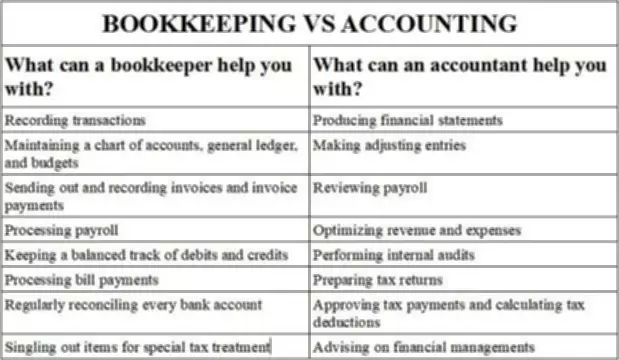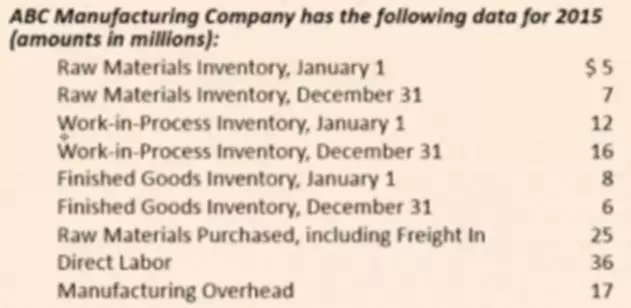کانال کفش و پوشاک و کیف با 70 % تخفیف
کانال دانلود اهنگ های جدید
ارزانترین فروشگاه اینترنتی
کیف ورزشی فقط 25 هزار تومان


Rather than use an excel template to track spending, you can get real time visibility into your expense data with Divvy. However, there are many strategies you can use to help you budget more efficiently. There are always ways to improve your budgeting and financial awareness to increase the health of your company, and we’re passionate about helping you get there. Xero lets you easily create a budget using their Budget Manager feature. You can choose your start date for any budget, and prepare a budget of 3, 6, 12, or 24 months.
There are many ways to treat a profit and setting a business budget will help you decide on the right strategy. A financial advisor will help you come up with the most tax-efficient plan. Before making any business decisions or purchase, refer to your budget and see how much money you have available to spend. After you’ve finished putting the profit and loss statement together, the next thing to do is to create a balance sheet. This will tell you what your business is worth, taking into account all of the money you owe. If you’re spending too much, now’s your time to put new limits on expenses and fix it.
Step 4: Predict One-Time Spends
Create the following month’s budget based on what you learn and where you want to go. Over time you should develop a complete picture of your annual budget and be able to accurately predict and plan for seasons and growth. You should also adjust your budget to reflect business priorities. You may consider increasing your marketing budget if your goal is to bring in new customers. If you’re making a net profit, you may consider investing that back into your business with needed upgrades.

This will help you gauge how successful your products are during off seasons, what revenue to expect, and how much to save during your peak periods. You can encourage payment by giving customers a grace period and creating strict business policies for paying late. Beyond this, you must have how do you use the present value of an ordinary annuity table some money allocated in your budget for ‘bad debt,’ in case the customer never pays. Here’s a step-by-step guide for creating a business budget, along with why budgets are crucial to running a successful business. From there, you can make informed business decisions and pivot accordingly.
Relax—run payroll in just 3 easy steps!
Second, a budget is, quite literally, a tool used to direct work done within an organization. The cash flow statement plays a different role by offering a higher-level overview of how money moves into, throughout, and out of an organization. Most organizations also prepare what’s known as an “actual budget” or “actual report” to compare estimates against reality following the period covered by the budget.
- If your small business doesn’t have access to these features or has simple financials, you can download free small-business budget templates to manually create and track your budget.
- Other variable costs can include advertising and marketing, as well as postage or printing costs.
- With company goals agreed upon, each department head should pick 3 to 5 goals for their area that contribute towards the company’s goals.
- If you create a rough budget and later discover that you need more money for your business activities, this will jeopardize your goals.
- Yarilet Perez is an experienced multimedia journalist and fact-checker with a Master of Science in Journalism.
Once you complete the budgeting process, the biggest mistake you could make is to file it away only to pull it out again at the end of the following year. Additionally, employees should know about any changes you make that might affect them or your company so they understand what is expected of them going forward. Ontra recommended treating your time like your money and setting external deadlines later than when you think the project will realistically be done. “It’s best to try to keep costs down even more in the off seasons and to have extra money saved in case the money coming in isn’t as much as you had hoped,” she said.
Step 1: Commit to Creating a Budget
Then you can use it to remake your business budget based on current information every quarter or every other quarter. Managing your cash flow is a key tool for keeping your new business afloat. You can be making a profit on paper, but if you don’t have money in the bank, your business won’t be able to pay its bills.
Dean and Skelton: State budget invests in New Hampshire’s future … – New Hampshire Business Review
Dean and Skelton: State budget invests in New Hampshire’s future ….
Posted: Wed, 21 Jun 2023 14:13:12 GMT [source]
After you’ve accounted for all your income and expenses, you can apply them to your budget. This is where you determine whether you have enough projected income to cover all your expenses. Depending on the nature of your organization, this can be a simple or complicated process. For example, consider a business that regularly experiences year-over-year revenue growth that’s offset by rising expenses. That organization might benefit from focusing efforts on better controlling expenses during the budgeting process. Budgeting is tricky for startups—you rarely have an existing model to use.
Identify your revenue streams
While putting together a projected income statement can feel great, it is just as important to calculate the expected cash flow of the business. Cho suggested revising your monthly and annual budgets regularly to get a clearer, updated picture of your business finances. Setting up an alert system can be a great way to help you stay on track with your budget. This ensures that any potential overspending is identified and quickly rectified, so you don’t end up going over your estimated budget for the month. To help ensure the success of your business, consider setting up alerts, automating payments where possible and regularly reviewing progress against budget goals. Business taxes are a necessary part of running a small business and should be included in the budget.
A good rule is to save around three to six months worth of monthly outgoings to make sure you protect your business during any problems. With this information, you can discover patterns in your income and expenditure over the course of a year and how different seasonal factors impact your finances. This step is where most people falter when they’re creating a budget, but it’s the most crucial step. Make or download a budget template and plug all of your information in. Review your bank statements and bookkeeping reports to spot your fixed bills and record the amount they cost every month.
Moreover, establishing spending limits can help keep costs down and prevent impulsive purchases that could hurt the bottom line. Maybe a pipe in your brick-and-mortar bursts, requiring a $10,000 payout. Or, you spend $2,500 replacing your copier when it breaks down. Now that you understand why business budget creation is so important, let’s jump into how to do it. But there’s one element that you want to stay on top of from the very beginning—and that’s your business budget. Xero does not provide accounting, tax, business or legal advice.
How do I create a budget for a small business in Excel?
- Navigate to the ‘File’ tab. The ‘File’ tab is on the top ribbon in Excel.
- Search for budgets.
- Select a suitable template.
- Fill the template.
- Create budget headers.
- Enter the expenses, costs, and income.
- Calculate the balance.
- Create visualizations.
Depending on their structure, businesses can be subject to income tax, withholding taxes, or sales and services tax (“SST”). Payroll costs consist of wages, salaries and other employee benefits. This is one of the largest expenses for many businesses, so it needs to be monitored closely in order to keep budgets balanced. Fixed costs or fixed cost are expenses that need to be paid regardless of how much or how little a business produces.
What are the 7 types of budgeting?
The 7 different types of budgeting used by companies are strategic plan budget, cash budget, master budget, labor budget, capital budget, financial budget, operating budget.






